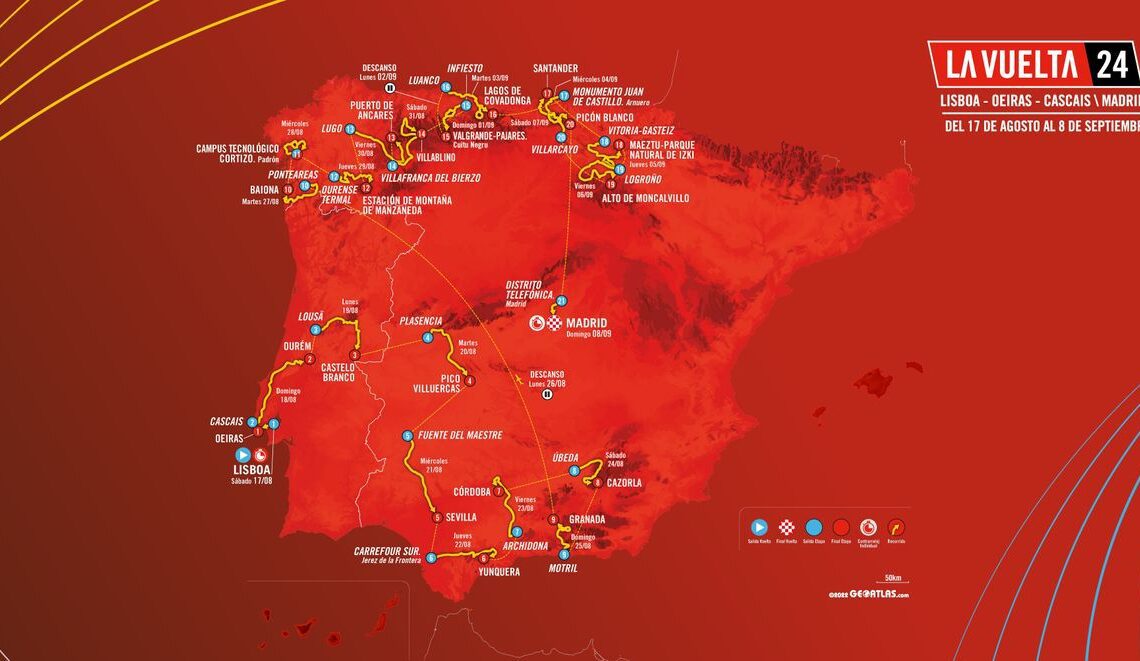The 2024 Vuelta a España route kicks off for the fifth time in Vuelta’s history with a foreign start, this time in Lisbon, the capital of neighbouring Portugal, with a short, straightforward individual time trial that will decide the race’s first leader.
Two more hilly stages take the Vuelta back towards the Spanish frontier, with the race marking its return to Spain on stage 4 with a first summit finish on the rugged ascent of Pico de Villuercas, last tackled in 2021 with a win for France’s Romain Bardet.
The first major mountain stage will come on much more familiar terrain on stage 9 when the Vuelta tackles two ultra-difficult cat.1 climbs in the foothills of the Sierra Nevada mountain range – the Purchil and a double ascent of the Alto de Hazallanas.
Both climbs featured in the hardest day’s racing of the 2022 Vuelta a España, on a stage where Primož Roglič (Jumbo-Visma) launched a searing late attack at the summit in a troubling setback for overall winner Remco Evenepoel (Soudal-QuickStep).
Rather than conclude in Sierra Nevada’s ski station like in 2022, next August, the Vuelta will descend back to the city of Granada for its finish, but even so, with so much climbing, stage 9 will likely be the first time the GC contenders come to the fore in the 2024 race.
A long transfer to Spain’s far northwest then follows, and after two rugged treks through the remote, hilly region of Galicia to open up week two of the Vuelta, a long, grinding ascent of the Manzaneda cat.1 climb on stage 13 will likely see the overall favourites back in action.
Stage 14’s much more challenging final climb of Ancares – the scene of a spectacular duel between Alberto Contador and Chris Froome in 2014 and with some notoriously rough road surfaces – will once again test the GC favourites prior to yet another hefty transfer, this time into the heart of the neighbouring Picos de Europa mountain range.
The Vuelta route presentation in Madrid on Thursday included a pre-recorded interview with Dario Cataldo as the only previous winner on the ski slopes of Cuitu Neru, the final climb on stage 15. Concluding with gradients of 24% and a daunting 19 kilometres long, the Italian allrounder recollected that it was “the steepest climb I’ve ever done in my life. At one point, I tried looking upwards to see where the finish was, and it was at such a steep angle, even though the finish was close, I nearly got a crick in my neck.”
After the little-known Cuitu Negru brings…
Click Here to Read the Full Original Article at CyclingNews RSS Feed…

